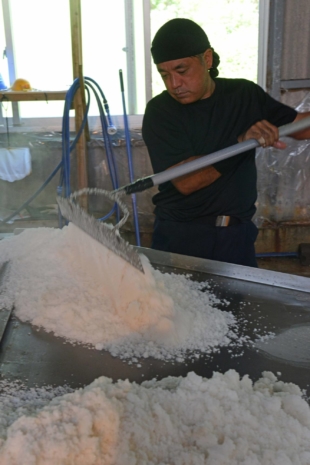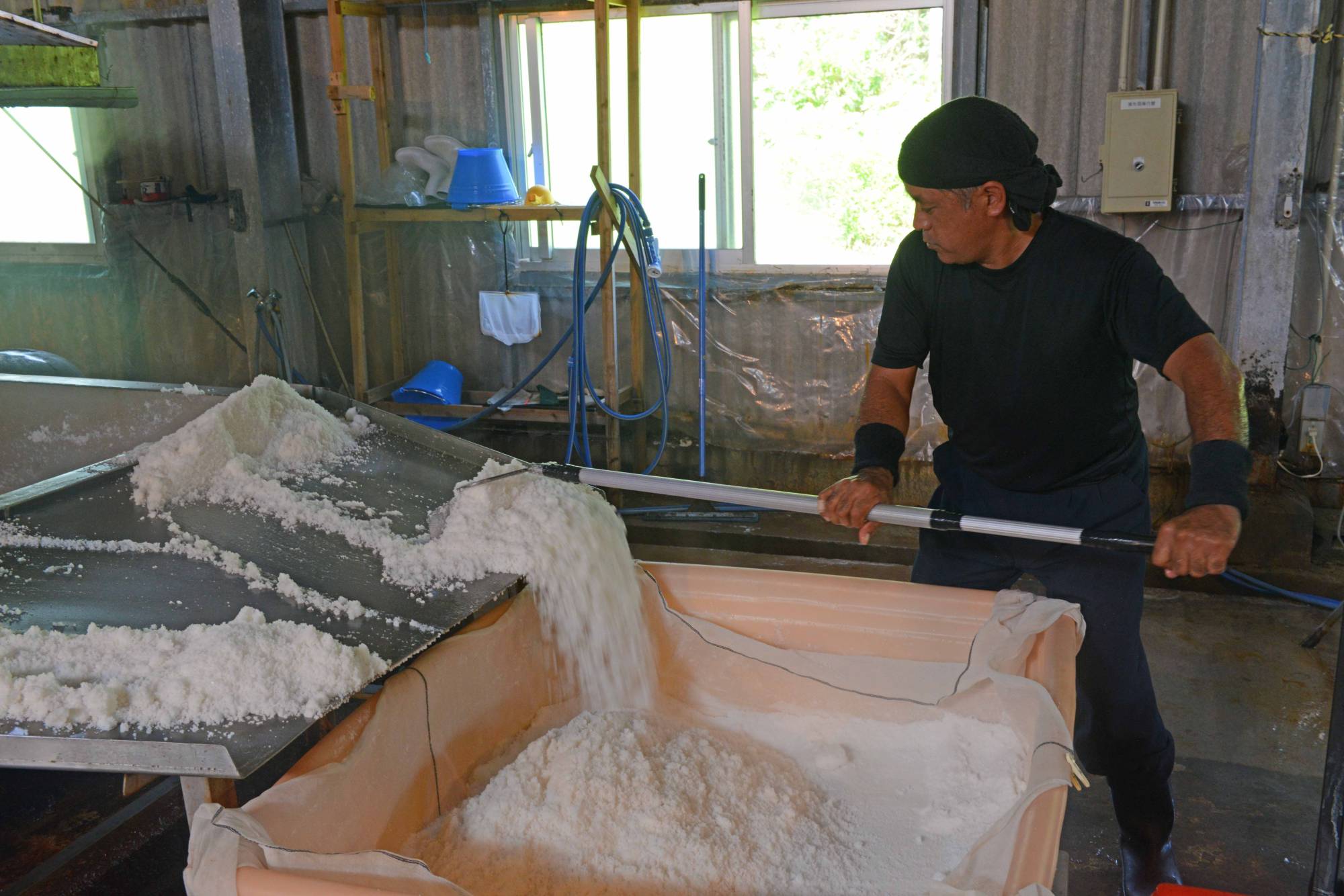I had to circle Hamahiga Island twice before finding the narrow, earth road. An hour’s drive from Naha, a sign made from sliced bark pointed to Takaesu Seienjo, a salt factory hidden behind clumps of ficus, deigo and subtropical broadleaf trees.
According to records, commercial salt production in Okinawa began in a tidal wetland near Naha in 1694. In a 19th-century guidebook on diet therapy, a physician to the Ryukyuan royal court named Tokashiki Pechin Tsukan claimed that salt, known in Okinawan as “māsu,” “removes toxins, purifies qi energy, and expels lung diseases.”



















With your current subscription plan you can comment on stories. However, before writing your first comment, please create a display name in the Profile section of your subscriber account page.